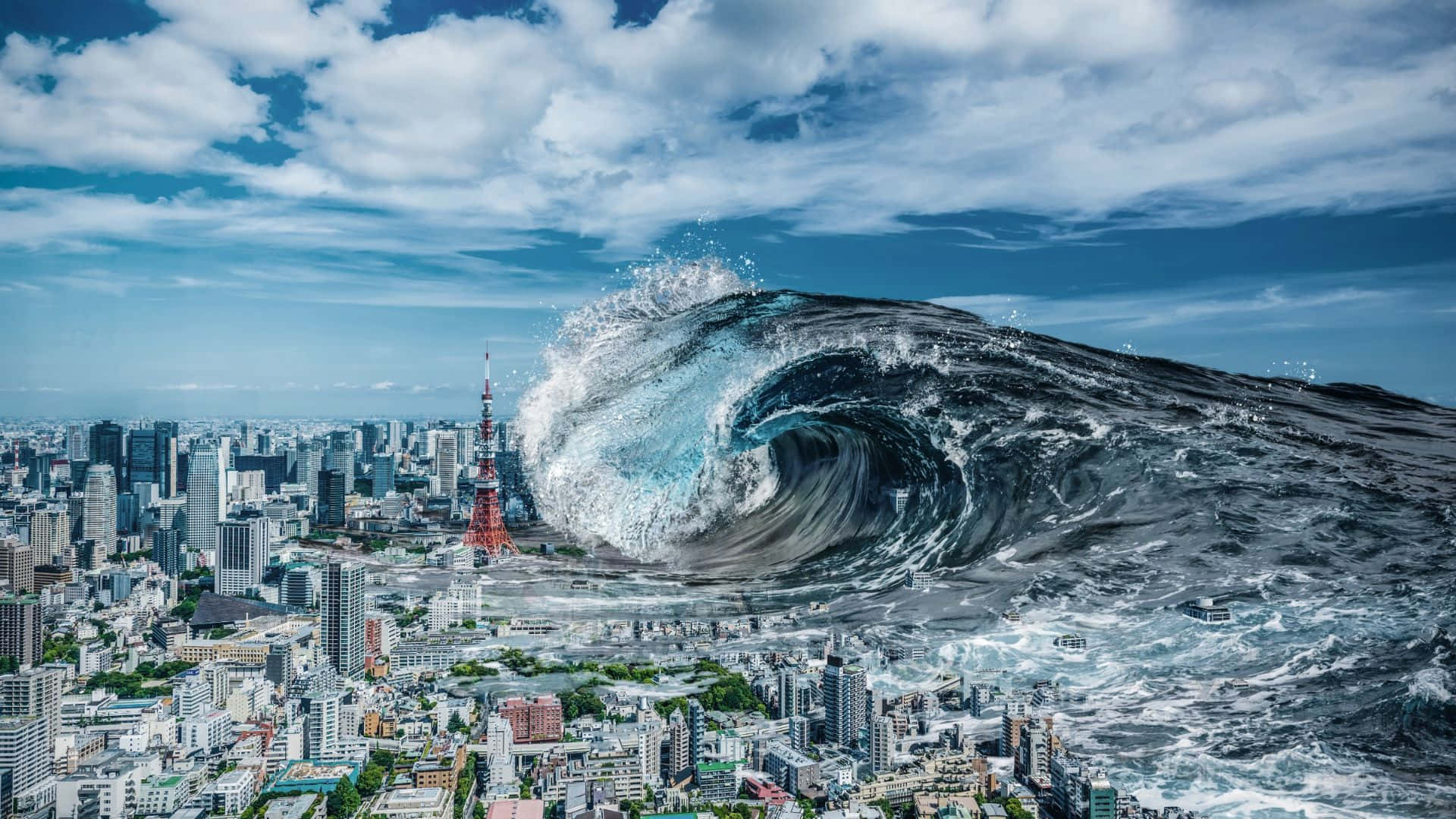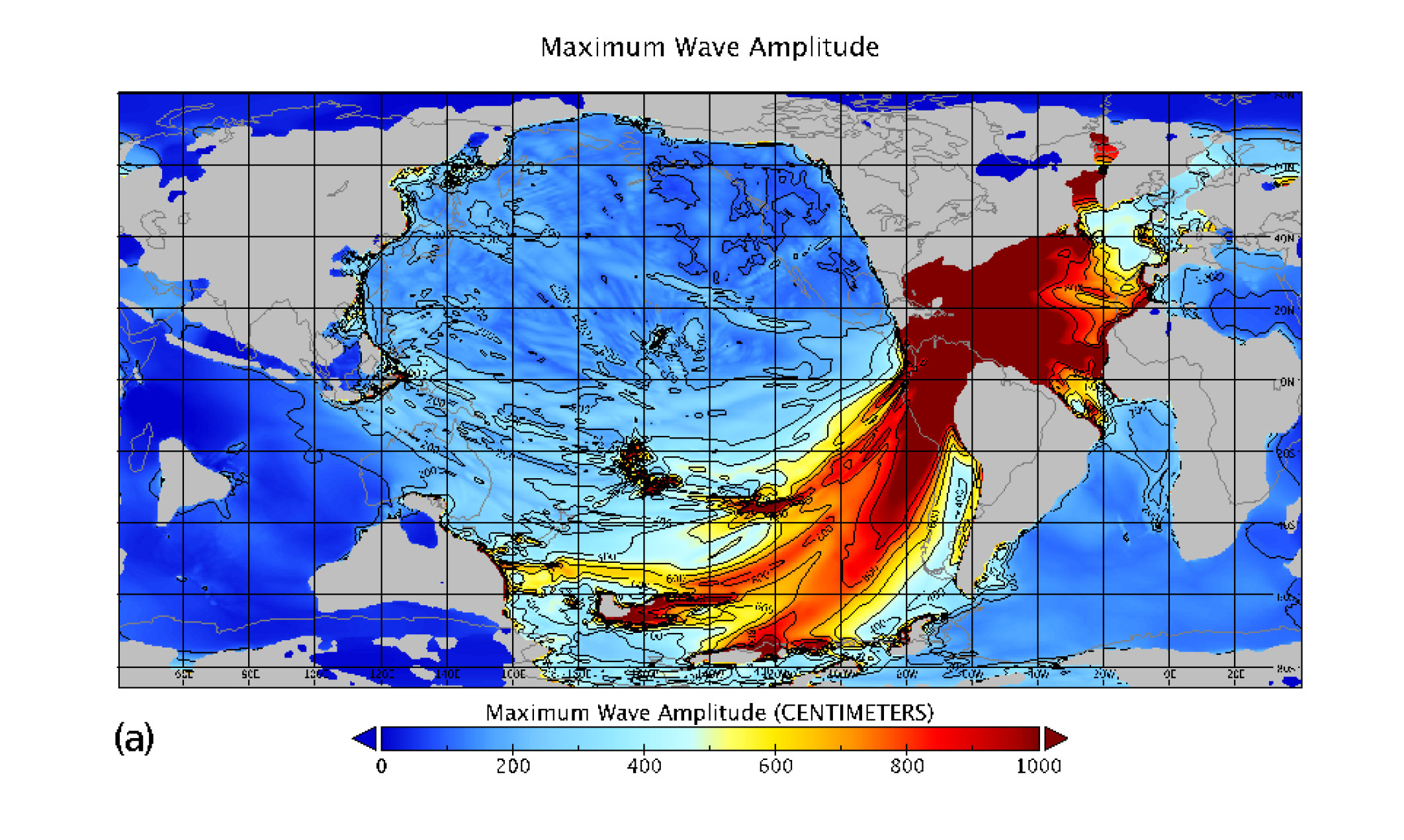Imagine standing by the ocean one day, enjoying the calm waves, when suddenly the water starts behaving strangely. This isn’t just a movie scene—it’s reality. Tsunami prediction for 2025 is a topic gaining traction, and understanding it could save lives. If you’ve been wondering about the science behind tsunamis or what experts are saying about the upcoming years, you’re in the right place.
Tsunamis are no joke. They’re not just big waves; they’re massive walls of water that can obliterate entire towns. The word "tsunami" comes from Japanese, meaning "harbor wave," but there’s nothing peaceful about these natural disasters. As we approach 2025, scientists are stepping up their game to predict and prepare for potential tsunamis. But why should you care? Because being informed could mean the difference between life and death.
Now, before we dive deep into the science and predictions, let’s clear something up. This isn’t just fearmongering. Tsunami prediction 2025 is based on real data, cutting-edge technology, and years of research. We’ll break it all down for you so you can understand the risks and learn how to stay safe. Ready? Let’s go!
- Hikaru Nagi About The Rising Star Of Anime And Voice Acting
- Charles Shaughnessy The Man Who Left An Indelible Mark On Hollywood
What Are Tsunamis and Why Do They Happen?
First things first, what exactly is a tsunami? Picture this: an earthquake happens deep beneath the ocean floor, causing massive shifts in tectonic plates. These shifts displace enormous amounts of water, creating waves that travel across entire oceans at speeds of up to 500 miles per hour. When these waves hit shallow waters near the coast, they slow down but grow in height, often reaching several feet or even tens of feet tall.
Tsunamis aren’t caused by regular storms or wind—they’re triggered by undersea earthquakes, volcanic eruptions, landslides, or even meteor impacts. The most common cause, however, is earthquakes with a magnitude of 7.0 or higher. And while they’re rare compared to other natural disasters, their impact can be catastrophic.
Key Facts About Tsunamis
- Tsunamis can travel across entire oceans without losing much energy.
- They’re often preceded by a sudden retreat of the sea, exposing the ocean floor.
- Not all earthquakes generate tsunamis—only those that cause significant vertical movement of the seafloor.
- Warning signs include strong ground shaking, a loud roar like a train or airplane, and unusual ocean behavior.
Why Is Tsunami Prediction Important?
Predicting tsunamis isn’t just about satisfying scientific curiosity—it’s about saving lives. In the past, communities have suffered devastating losses because warnings came too late or not at all. For example, the 2004 Indian Ocean tsunami killed over 230,000 people across 14 countries. Many of those lives could have been saved with better early warning systems and public awareness.
- Unlocking The Power Of Agmaalrun Your Ultimate Guide
- Cyb4rangel Naked Unveiling The Truth Behind The Digital Veil
In 2025, as populations continue to grow along coastal areas, the stakes are higher than ever. That’s why researchers are working tirelessly to improve prediction models and communication networks. But how exactly do they predict tsunamis? Let’s take a closer look.
How Scientists Predict Tsunamis
Modern tsunami prediction relies on a combination of tools and technologies:
- Seismic Monitoring: Networks of seismometers detect earthquakes in real-time, providing crucial data about location, depth, and magnitude.
- DART Buoys: Deep-ocean Assessment and Reporting of Tsunamis (DART) buoys measure changes in sea level and transmit data to warning centers.
- Computer Models: Advanced simulations help predict wave propagation and potential impact zones.
- Historical Data: Studying past events helps scientists identify patterns and high-risk areas.
Tsunami Prediction 2025: What Do Experts Say?
As we head toward 2025, experts are cautiously optimistic about advancements in tsunami prediction. New technologies and international cooperation are making it possible to issue warnings faster and more accurately. However, challenges remain, especially in remote or underdeveloped regions where infrastructure may be lacking.
One major focus is improving global coverage of seismic and oceanographic monitoring systems. According to the National Oceanic and Atmospheric Administration (NOAA), the number of DART buoys has increased significantly in recent years, enhancing our ability to detect tsunamis early. But there’s still work to be done.
High-Risk Areas for 2025
Based on historical data and current research, certain regions are considered high-risk for tsunamis in 2025:
- Ring of Fire: The Pacific Ocean’s “Ring of Fire” is notorious for its frequent earthquakes and volcanic activity. Countries like Japan, Indonesia, and Chile are particularly vulnerable.
- Alaskan Coast: The Aleutian Trench poses a significant threat due to its tectonic activity.
- Indian Ocean: Following the 2004 disaster, countries bordering the Indian Ocean have invested heavily in early warning systems, but risks persist.
The Role of Technology in Tsunami Prediction
Technology plays a critical role in predicting and mitigating the effects of tsunamis. From satellite imaging to AI-driven analytics, scientists are leveraging innovation to stay ahead of these natural disasters. Here’s a glimpse into some of the coolest tools being used:
- Satellite Altimetry: Satellites measure sea surface height to detect anomalies that might indicate a tsunami.
- Machine Learning: Algorithms analyze vast datasets to identify patterns and improve prediction accuracy.
- Mobile Apps: Apps like TsunamiReady provide real-time alerts and safety tips directly to users’ phones.
While technology offers hope, it’s important to remember that no system is foolproof. Human vigilance and preparedness remain essential components of disaster management.
Limitations of Current Technology
Despite advances, there are limitations to what technology can achieve:
- Data gaps in certain regions can hinder accurate predictions.
- False alarms can erode public trust in warning systems.
- Costs associated with deploying and maintaining equipment can be prohibitive for some countries.
How Can You Prepare for a Tsunami?
Knowing the science behind tsunamis is one thing, but knowing how to protect yourself is another. Here are some practical steps you can take to stay safe:
- Know Your Zone: Check if you live or work in a tsunami evacuation zone.
- Create a Plan: Develop a family emergency plan and practice evacuating.
- Stay Informed: Sign up for alerts from local authorities and reliable apps.
- Learn the Signs: Familiarize yourself with natural warning signs, such as unusual ocean behavior or ground shaking.
Remember, seconds count during a tsunami. If you feel an earthquake or hear a warning, move to higher ground immediately. Don’t wait for official confirmation—your instincts could save your life.
Building Resilient Communities
Individual preparedness is crucial, but so is community resilience. Governments, NGOs, and local organizations play vital roles in educating the public, building infrastructure, and conducting drills. Initiatives like UNESCO’s Intergovernmental Oceanographic Commission (IOC) are helping coordinate efforts globally.
Lessons Learned from Past Tsunamis
History offers valuable lessons for the future. By studying past events, scientists and policymakers can better understand what works—and what doesn’t—when it comes to tsunami preparedness. For example:
- The 2011 Tohoku earthquake and tsunami in Japan highlighted the importance of robust sea walls and evacuation protocols.
- The 2004 Indian Ocean tsunami underscored the need for widespread early warning systems and international cooperation.
Each disaster provides opportunities for learning and improvement. As we look ahead to 2025, it’s clear that history will continue to guide our efforts.
Case Study: The 2004 Indian Ocean Tsunami
This catastrophic event claimed over 230,000 lives and displaced millions. It also prompted significant changes in tsunami preparedness, including:
- Establishment of the Indian Ocean Tsunami Warning System (IOTWS).
- Increased investment in education and awareness programs.
- Development of new technologies for faster detection and communication.
The Future of Tsunami Prediction
Looking beyond 2025, the future of tsunami prediction looks promising. Advances in artificial intelligence, machine learning, and big data analytics will likely lead to even more accurate and timely warnings. Additionally, international collaboration and resource sharing will continue to strengthen global preparedness efforts.
However, challenges remain. Climate change, rising sea levels, and increasing coastal populations all add complexity to the equation. Scientists must adapt their models and strategies to account for these evolving factors.
What You Can Do Today
While you may not be a scientist or policymaker, you can still make a difference:
- Spread awareness about tsunami risks and preparedness.
- Support organizations working on disaster risk reduction.
- Advocate for policies that prioritize safety and sustainability.
Conclusion: Stay Informed, Stay Safe
Tsunami prediction 2025 is a complex but crucial topic. By understanding the science, staying informed about advancements, and taking practical steps to prepare, you can help protect yourself and your loved ones. Remember, knowledge is power—and in the face of natural disasters, it could mean the difference between tragedy and survival.
So, what’s next? Share this article with friends and family, leave a comment with your thoughts, and explore other resources to deepen your understanding. Together, we can build a safer, more resilient world.
Table of Contents
- What Are Tsunamis and Why Do They Happen?
- Why Is Tsunami Prediction Important?
- Tsunami Prediction 2025: What Do Experts Say?
- The Role of Technology in Tsunami Prediction
- How Can You Prepare for a Tsunami?
- Lessons Learned from Past Tsunamis
- The Future of Tsunami Prediction
- Conclusion: Stay Informed, Stay Safe



Detail Author:
- Name : Mr. Hiram Yost PhD
- Username : torp.lauriane
- Email : kaelyn76@yahoo.com
- Birthdate : 1987-08-31
- Address : 3534 Thurman Divide Apt. 539 West Lonzoview, IA 71023
- Phone : +1-914-520-8468
- Company : Kautzer Ltd
- Job : Warehouse
- Bio : Suscipit ut nesciunt alias deleniti. Omnis et eligendi necessitatibus et enim dolorem ullam.
Socials
twitter:
- url : https://twitter.com/telly9327
- username : telly9327
- bio : Id est similique et nihil. Sunt a quas voluptatum magnam rem. Ea deleniti consectetur vel. Ut sit voluptas aspernatur voluptates sunt sed assumenda.
- followers : 2248
- following : 2182
facebook:
- url : https://facebook.com/tellybradtke
- username : tellybradtke
- bio : Iusto et consequatur eos et tempore.
- followers : 479
- following : 316